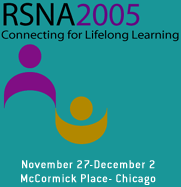
Abstract Archives of the RSNA, 2005
Andras Konya MD, Presenter: Nothing to Disclose
L. Clifton Stephens DVM, Abstract Co-Author: Nothing to Disclose
Kenneth Carroll Wright PhD, Abstract Co-Author: Nothing to Disclose
To verify ablation by pure Ethiodol in normal rabbit kidneys followed by injection of a 9:1 ethanol-Ethiodol mixture (EEM) into renal arteries.
In 10 rabbits, 0.6 cc of Ethiodol was injected into the main renal artery of the right kidney to achieve complete capillary stasis. EEM was then injected until complete arterial stasis was seen. Five left kidneys of the animals were acutely embolized the same way. Kidneys were evaluated macroscopically and microscopically after 10 min (n=1), 30 min (n=1), 120 min (n=1), 180 min (n=1), 24 h (n=1), 1 wk (n=4), 4 wk (n=1), and 6 wk (n=5). One kidney was embolized with the same amount of Ethiodol without arterial occlusion and followed up for 1 wk.
Ethiodol followed by EEM (mean 0.33±0.02 mL, 0.21-0.40 mL) caused complete stasis in all kidneys. Complete occlusion of the renal artery was verified in each animal. Histologically, thrombosis of large arteries was the initial lesion. Ischemic coagulative necrosis of renal tubules and damage to glomeruli were detected as soon as 120 min after embolization. In 24 h, the glomeruli and most tubules of the cortex and medulla were necrotic. Macroscopically, the renal parenchyma was ablated in 1 wk; the kidneys were significantly smaller in 6 wk. By that time, a thickened capsule surrounded the kidneys, occasionally with firm adhesions to neighboring organs (e.g., liver, inferior vena cava, and mesenterium). Radiographs revealed homogeneous distribution of Ethiodol in renal parenchyma. Microscopically, uniform Ethiodol distribution was evident in all sections at all times. Complete coagulative necrosis of the kidney resulted from an occluding thrombus in the artery. One week after injection of pure Ethiodol without arterial occlusion, the arteriocapillary bed of the kidney was completely patent with normal contrast excretion.
Selective arterial injection of Ethiodol followed by EEM produced complete renal infarction and ablation in rabbits. Ethiodol, which is generally considered inert, produced complete renal ablation in the kidney if prompt and permanent arterial occlusion guaranteed that it remained permanently in the capillaries.
L.S.: No financial interest existsK.C.W.: Shareholder, patent owner (IDev Technologies, Inc., Houston, TX)A.K.: Shareholder, patent owner, and consultant (IDev Technologies, Inc., Houston, TX)
Konya, A,
Stephens, L,
Wright, K,
A New Transcatheter Method for Renal Ablation: Pure Ethiodized Oil Is an Efficient Ablative Agent. Radiological Society of North America 2005 Scientific Assembly and Annual Meeting, November 27 - December 2, 2005 ,Chicago IL.
http://archive.rsna.org/2005/4411303.html

